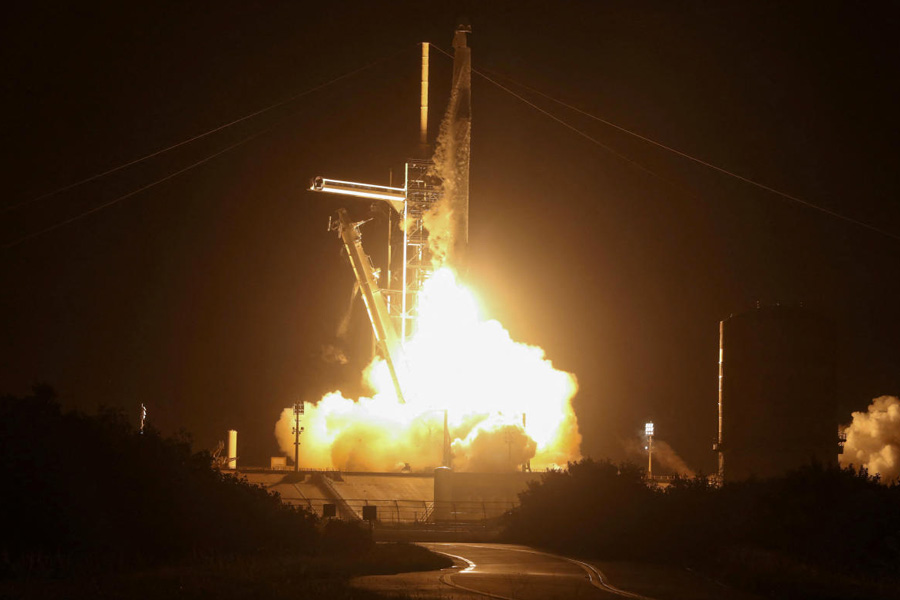Two private astronauts moved outside their spacecraft early on Thursday morning, conducting the first-ever commercial spacewalk.
The spacewalk was the centrepiece of Polaris Dawn, a collaboration between Elon Musk’s SpaceX and Jared Isaacman, a billionaire entrepreneur who is leading the mission.
“Back at home, we all have a lot of work to do, but from here, it sure looks like a perfect world,” he said while standing in the hatch of the SpaceX Crew Dragon capsule with the Earth above his head.
After letting all of the air out of the Crew Dragon spacecraft, Isaacman and another crew member, Sarah Gillis, a SpaceX engineer, opened the top hatch and, one at a time, moved outside. The two other crew members, Scott Poteet and Anna Menon, remained inside the vehicle while also wearing spacesuits as the airless capsule was exposed to the vacuum of space.
Space travel is no longer the exclusive province of professional astronauts working at governmental space agencies like Nasa, and now neither is the derring-do of spacewalks, when astronauts are protected by just their spacesuits from airless doom. The Polaris missions — this one is the first of three — aim to accelerate technological advances needed to fulfill Musk’s hope of sending people to Mars someday.
Those needs will include more advanced spacesuits for any attempt at off-world colonisation. During a news conference before the launch, Isaacman mused about how someone stepping onto Mars might one day wear a future version of the spacesuit that SpaceX developed for the Polaris Dawn mission.
“A huge honour to have that opportunity to test it out on this flight,” he said.
Closer to Earth, commercial spacewalks could open up other possibilities once impossible to imagine, such as technicians repairing private satellites in orbit. Isaacman has even suggested that the second Polaris mission could attempt a trip to Nasa’s ageing Hubble Space Telescope to perform repairs.
The spacewalks by Isaacman and Gillis were short and modest in complexity. They moved slowly and deliberately, using a handrail outside the hatch, never letting go of the spacecraft.
Because there is no airlock in the SpaceX Crew Dragon spacecraft used for the flight, the only way to perform a spacewalk is to let all the air out of the spacecraft, and then open one of the hatches. That requires all four crew members to wear spacesuits.
Nasa and Soviet astronauts conducted spacewalks in a similar manner in the 1960s.
As the Crew Dragon swings around Earth in an elliptical orbit that swings as close as 193km to the surface and as high as 692km, Isaacman and Sarah Gillis, a SpaceX engineer, exited the capsule for less than 10 minutes each. They passed through the hatch at the top of the Crew Dragon with the help of a handrail that SpaceX has named Skywalker, moving carefully and deliberately.
New York Times News Service











